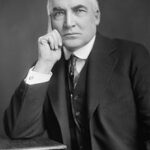The Decision
President Warren G. Harding signed the Emergency Quota Act on May 19, 1921. This landmark legislation established America’s first comprehensive immigration quota system. 📊 The act limited annual immigration from any country to 3% of foreign-born residents from that nation living in the U.S. as of 1910. This created a systematic approach to managing immigration flows.
Administrative Framework
The immigration quota system replaced chaotic, inconsistent immigration policies with organized federal oversight. Immigration officials could now predict and prepare for anticipated arrivals. ⚖️ The system provided clear numerical limits that simplified processing procedures. Port authorities received specific guidelines for implementing the new quotas effectively.
Economic Considerations
Post-World War I America faced massive unemployment among returning veterans. The quota system helped stabilize labor markets during economic transition. 💰 American workers gained protection from wage depression caused by unlimited immigration. Industries could better plan workforce needs with predictable immigration patterns.
Impact:
Immediate Consequences
The immigration quota system dramatically reduced total immigration from over 800,000 annually to approximately 350,000. Ellis Island processing became more efficient and organized. 📉 European immigration decreased significantly, particularly from Southern and Eastern Europe. The system provided immigration officials with clear legal authority to enforce restrictions consistently.
Long-term Policy Framework
Harding’s quota system established the foundation for all subsequent U.S. immigration policy. The National Origins Act of 1924 built upon this framework. 🌍 Congress continued using quota-based systems for decades, demonstrating the policy’s administrative effectiveness. The systematic approach influenced immigration policies worldwide as other nations adopted similar frameworks.
Historical Significance
The immigration quota system represented America’s transition from unlimited to regulated immigration. It established federal government authority over immigration policy previously handled by states. 🏛️ Historians recognize this as a pivotal moment in American administrative governance. The decision created lasting precedents for federal immigration control that continue influencing policy today.
